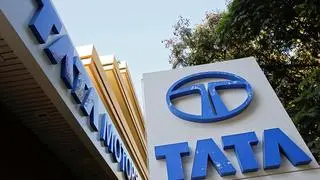With the Covid-19 pandemic causing a massive disruption in all spheres, finding bidders for the cases already admitted under IBC for resolution appears a herculean task. As such, the number of cases being pushed into liquidation under IBC, on failure to find a resolution plan, has shot up sharply over the past two years.
Of the 3,774 cases admitted so far (until March 2020), according to recent data released by IBBI, liquidation has been ordered in 914 cases; only 221 cases have seen approval of the resolution plan. The number of cases pushed into liquidation has risen sharply over the past two years. In FY20, 518 cases under IBC moved into liquidation, a 70 per cent jump from the previous year.
A recent amendment to the Insolvency and Bankruptcy Code (IBC), promulgated through an ordinance, has suspended fresh insolvency proceedings against a debtor for a default occurring on or after March 25 for a period of six months (this can be extended up to one year). The move is aimed at offering relief to stressed companies, particularly MSMEs, and to prevent many of them being pushed into insolvency and, subsequently, liquidation, owing to the weak economic environment.
In a recent interaction with BusinessLine Dr MS Sahoo, Chairperson, IBBI, had stated that the rationale behind the suspension was to prevent viable firms from being pushed into liquidation for want of a resolution applicant. “It typically requires a rescuer to rescue a firm in distress under IBC. When every firm, which was viable till recently, is reeling under stress on account of Covid-19, are there rescuers?”
That being the case, it appears that finding bidders for cases already filed under IBC will also be a herculean task, pushing more companies into liquidation.
“Resolution of entities will be difficult for want of takers. Suspension of insolvency for Covid-19 defaults will reduce the number of insolvent enterprises entering the marketplace, but it should also apply to cases that have not yet been admitted (non-Covid defaults),” opines KS Ravichandran, Managing Partner, KSR & Co Company Secretaries LLP.
IBC has set 180 days (extendable to 270 days) to complete the resolution process (within 330 days, including interim litigation period) failing which a company goes into liquidation.
“India has put a hard timeline for resolution, failing which liquidation mandatorily ensues. Such an approach obviously does not work in the present environment. Getting investors for assets in resolution or liquidation laden with a baggage of issues will be very difficult,” explains Vinod Kothari, a financial consultant and insolvency professional.
What is also of concern is that distress sale of assets under liquidation could fetch a more abysmal value for creditors, even as existing delays in the liquidation process continue to erode the value of the underlying assets.

One in four cases into liquidation
While some of the big-profile cases, such as Electrosteel Steels, Bhushan Steel, Essar Steel etc., have been resolved under IBC, many others that were part of the 12 large accounts admitted under IBC by banks (as directed by the RBI) three years ago, are yet to see resolution or have been pushed into liquidation. Lanco Infratech and ABG Shipyard, for instance, are currently under liquidation.
A look at the data since 2017 suggests that there is a notable skew in the trend of cases resolved so far. For instance, of the 221 cases resolved, half pertain to the manufacturing sector, of which 31 are from the basic metals space. In other sectors, such as textiles and construction, interest has been tepid. Of the 914 liquidation cases, 88 pertain to textiles, leather and apparel products, and 66 to the construction sector.









Comments
Comments have to be in English, and in full sentences. They cannot be abusive or personal. Please abide by our community guidelines for posting your comments.
We have migrated to a new commenting platform. If you are already a registered user of TheHindu Businessline and logged in, you may continue to engage with our articles. If you do not have an account please register and login to post comments. Users can access their older comments by logging into their accounts on Vuukle.